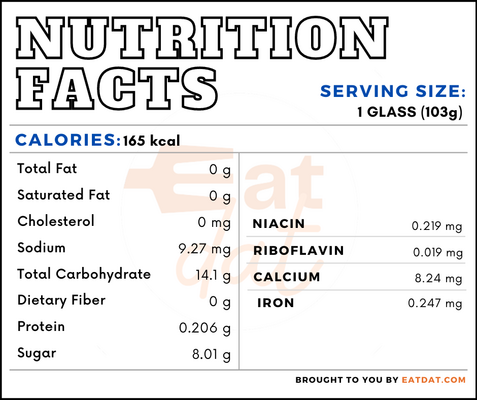
Dessert Wine
What is a Dessert Wine?
Dessert wines are a type of wine that are often consumed with desserts because of their light and sweet flavor. These beverages are also meant to be consumed in small glasses. For a wine to be considered a dessert wine, it must be as sweet as the dessert being eaten.
These wines are divided into five different types:
- sparkling dessert wine
- lightly sweet dessert wine
- richly sweet dessert wine
- sweet red wine
- fortified wine.
In the United States, sales totaled 40.4 million 9-liter cases in 2018.
The top 9 most popular sweet wine brands include:
- Moscato d’Asti (Italy)
- Tokaji Aszú (Hungary
- Sauternes (France)
- BA and TBA Riesling (Germany)
- Rutherglen Muscat (Australia)
- Recioto della Valpolicella (Italy)
- Vintage Port (Portugal)
- P.X. Sherry (Spain)
Origin of dessert wine
Sweet wines have been around for as long as wines have existed. As a matter of fact, the sugar content of wines has always increased and decreased over the years. Commandaria wine from Cyprus is possibly the oldest dessert wine. The name is believed to originate from crusaders in the 13th century, but some historians believe that this wine was first made 5,000 years ago. Another contender for the oldest type of this wine is the Hungarian wine, Tokaji Aszú. This wine is a noble rot wine, which was invented by accident around 1620 when a vineyard owner, Zsuzsanna Lórántffy, delayed harvesting due to the invading Ottomans.
Nutrition
One glass of dessert wine contains:

This drink are generally white wines, which lack the healthy antioxidants normally associated with wine. They also have a higher sugar content than their red counterparts. It is recommended that wine grapes retain their skin for longer periods to provide beneficial health compounds. Therefore, pinker wine can be a good choice for providing more health benefits. However, overconsumption of dessert wine can result in major health complications. These include obesity, change in the brain’s functioning patterns, liver cirrhosis, pancreatitis, heart problems, strokes, different types of cancers, as well as the impact on overall immunity.
Commercial production
There are several ways to make dessert wine. The first step is to use overripe grapes that are harvested later than usual, as these grapes contain high levels of sugar. Some vineyard owners allow the grapes to be infested by mold, causing the grapes to dehydrate and increase both sweetness and flavor. Another method is adding alcohol to the fermentation of sweet grapes to make them sweeter and more concentrated. Ice wines, a rare type, are made when the vineyard freezes over and the frozen grapes are harvested and squeezed for juice, which is made into wine.
Dessert wine recipes
Sweet wine is usually consumed as a stand-alone drink. An unopened bottle of this wine can be kept in a cool, dark place and stored on its side with the liquid against the cork. An opened bottle will last for a few days if stored properly. Dessert wines may also be used to impart sweetness to a dessert or main course. Here are a few popular recipes:
- Wine Ice Cream
- Sweet Wine Garlic Chicken
- Wine Gelees with Citrus Fruit
- Red Wine Chocolate Cake
- Grape & Wine Cake
- Grilled Nectarines
- Sweet Wine and Honey Roasted Pears
- Chocolate Wine Balls
- Upside Down Cake
FDA regulations
Alcohol is regulated by the TTB (Alcohol and Tobacco Tax and Trade Bureau) unless it is an artisanal product, in which case it is regulated by the FDA. There are strict regulations regarding the governing of any type of wine. Dessert wine is identified as wine made with grapes and containing more than 14% but less than 24% alcohol by volume. Some wines specifically classified as dessert wines by the TTB are Angelica, Madeira, Sherry, Port, and Muscatel.
References
Courtney Schiessl, The Ultimate Guide To Dessert Wines + Infographic!, VinePair, https://vinepair.com/articles/ultimate-guide-dessert-wines-infographic/
National Institute of Alcohol Abuse and Alcoholism, Alcohol’s Effects on the Body, https://www.niaaa.nih.gov/alcohols-effects-health/alcohols-effects-body
